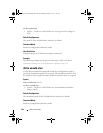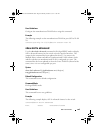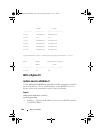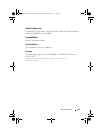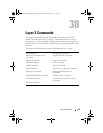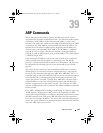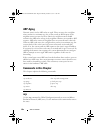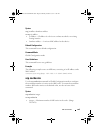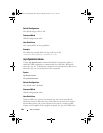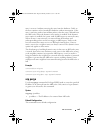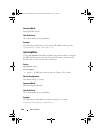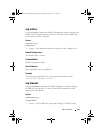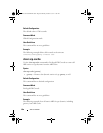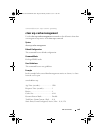
852 ARP Commands
ARP Aging
Dynamic entries in the ARP cache are aged. When an entry for a neighbor
router reaches its maximum age, the system sends an ARP request to the
neighbor router to renew the entry. Entries for neighbor routers should
remain in the ARP cache as long as the neighbor continues to respond to ARP
requests. ARP cache entries for neighbor hosts are renewed more selectively.
When an ARP cache entry for a neighbor host reaches its maximum age, the
system checks if the cache entry has been used recently to forward data
traffic. If so, the system sends an ARP request to the entry's target IP address.
If a response is received, the cache entry is retained and its age is reset to 0. By
enabling the dynamic renew option, the system administrator can configure
ARP to attempt to renew aged ARP entries regardless of their use for
forwarding.
If the system learns a new ARP entry but the hardware does not have space to
add the new ARP entry, the system attempts to remove entries that have not
been used for forwarding recently. This action may create space for new
entries in the hardware's ARP table.
Commands in this Chapter
This chapter explains the following commands:
arp
Use the arp command in Global Configuration mode to create an Address
Resolution Protocol (ARP) entry. Use the no form of the command to remove
the entry.
arp clear arp-cache
arp cachesize clear arp-cache management
arp purge ip local-proxy-arp
arp resptime ip proxy-arp
arp retries show arp
arp timeout –
2CSPC4.XCT-SWUM2XX1.book Page 852 Monday, October 3, 2011 11:05 AM



